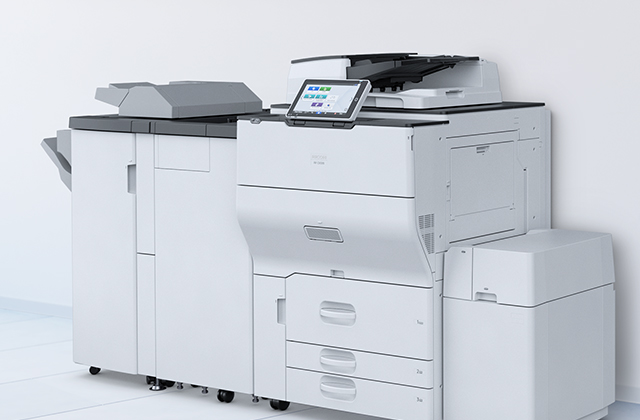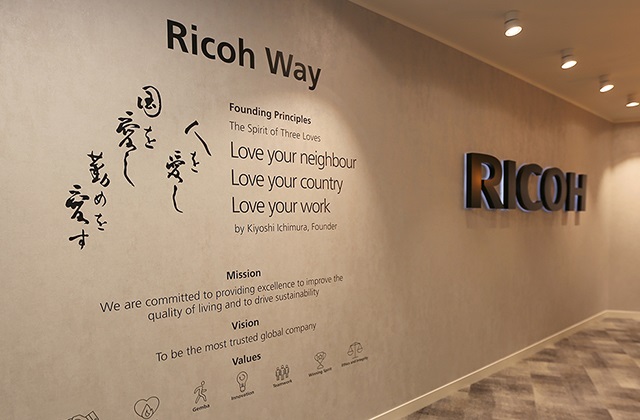Cutting the red tape for Silicon Europe to take centre stage
By David Mills, CEO, Ricoh Europe
Ricoh Europe, 18 November 2015 – If you were asked to name an innovative digital business today, the chance is a European organisation wouldn’t immediately spring to mind. Uber, Facebook, Apple and Google, as well as over half of the world’s Top 100 listed companies come from the US. And with the likes of Alibaba and Tencent, there’s also a show of increasingly strong Chinese competition1.
Despite rapid transformation and 59 per cent of European businesses now being ‘digital’ in one way or another2, it’s clear that the continent lags behind the global barometer. However, it’s not a lack of ambition which dampens the potential of many home-grown companies. In fact, a recent study of 1,360 business decision makers across 16 EU countries, commissioned by Ricoh Europe, found most European businesses (65 per cent) intend to expand to other countries in the continent over the next five years. Instead, it’s the complex web of rules and legislation that make navigating the single market particularly tricky.
Nevertheless, there is hope to overcome this roadblock which politicians, regulators and business people are all too aware of. The European Digital Single Market, a critical component of the EU Digital Agenda to be launched next year, is a welcome development which should level the playing field. Tackling issues such as geo-blocking, copyright laws and simplifying VAT rules, the digital single market will standardise regulations so that the same content, products and services will be available at the same price anywhere in the EU. With apps and downloads costing the same from Greece to Ireland, and Portugal to Finland, we should expect a huge uptake in cross-border ecommerce.
By massively reducing red tape in a traditionally complex market, the digital single market is an exciting chance for many European businesses to accelerate their growth at a pace to match their international rivals. Any trader, whether a single shop-keeper or a digital start-up based in the heart of London’s Silicon Roundabout with plans to completely reimagine our online lives, will be able to sell across the entire EU confident in the knowledge that the same rules for ecommerce apply everywhere.
The digital single market is estimated to make a contribution of €415 billion to the European economy4. As such, enabling companies to do business with an additional 500 million new consumers in one go can only be a good thing. The benefits expected by European businesses include reduced barriers to entry (52 per cent), greater profitability (50 per cent) and reduced operating costs (48 per cent)5. All of these are within easy grasp of businesses willing to embrace arguably the biggest change to European regulation in recent years.
So what are the next steps? By starting to streamline, digitise and standardise their processes, forward-thinking European businesses will be in good shape to develop a distinct competitive advantage – a necessary step if Europe is going to take its spot on the global stage.
Firstly, organisations need to audit their current processes for operating across borders to help them understand their position in the changing landscape. Secondly, with the audit complete, organisations can focus on enhancing the ways in which they work to be more efficient in a larger, multi-lingual, market. Here, the standardisation of systems to drive cost-savings and boost productivity is key. Lastly, they shouldn’t be afraid to approach expert help in the form of consultancies and partners who already have the knowledge of what it takes to grow internationally and are able to advise based on their experience.
With the number of firms trading in only one country to shrink from around half of European businesses today to just 21 per cent in 20206, the introduction of a digital single market is a genuine hope for the continent. With a digital presence now able to put every company within reach of millions of new customers, the only limit to innovation is our imagination. If all goes according to plan, the next digital giant could as easily be a start-up in Paris, Berlin or London as it could be in San Francisco, Shanghai or Beijing. So let’s roll out the red carpet and cut the red tape to welcome Silicon Europe!
1. PwC, Global Top 100 companies – 2015 update
2. http://ec.europa.eu/growth/sectors/digital-economy/importance/index_en.htm
3. Ricoh Europe: Digital Marketplace – Hope or Hype?
4. http://ec.europa.eu/priorities/digital-single-market/
5. Ricoh Europe: Digital Marketplace – Hope or Hype?
6. Ricoh Europe: Digital Marketplace – Hope or Hype?
| À propos de Ricoh |
Ricoh soutient les lieux de travail numériques en utilisant des technologies et des services novateurs qui permettent aux utilisateurs de travailler plus intelligemment, où qu’ils soient.
Grâce aux connaissances et aux capacités organisationnelles acquises et cultivées au cours de ses 85 années d’existence, Ricoh est l’un des principaux fournisseurs de services numériques, de gestion de l’information et de solutions d’impression et d’imagerie conçus pour soutenir la transformation numérique et optimiser la performance des entreprises.
Le Groupe Ricoh, qui a son siège à Tokyo, a des activités importantes dans le monde entier et ses produits et services touchent désormais des clients dans environ 200 pays et régions. Pour l’exercice clos en mars 2022, le Groupe Ricoh a réalisé un chiffre d’affaires mondial de 1 758 milliards de yens (environ 14,5 milliards USD).
Pour plus d’informations : www.ricoh.be
© 2023 RICOH COMPANY, LTD. Tous droits réservés. Tous les noms de produits référencés sont les marques de leurs sociétés respectives.












